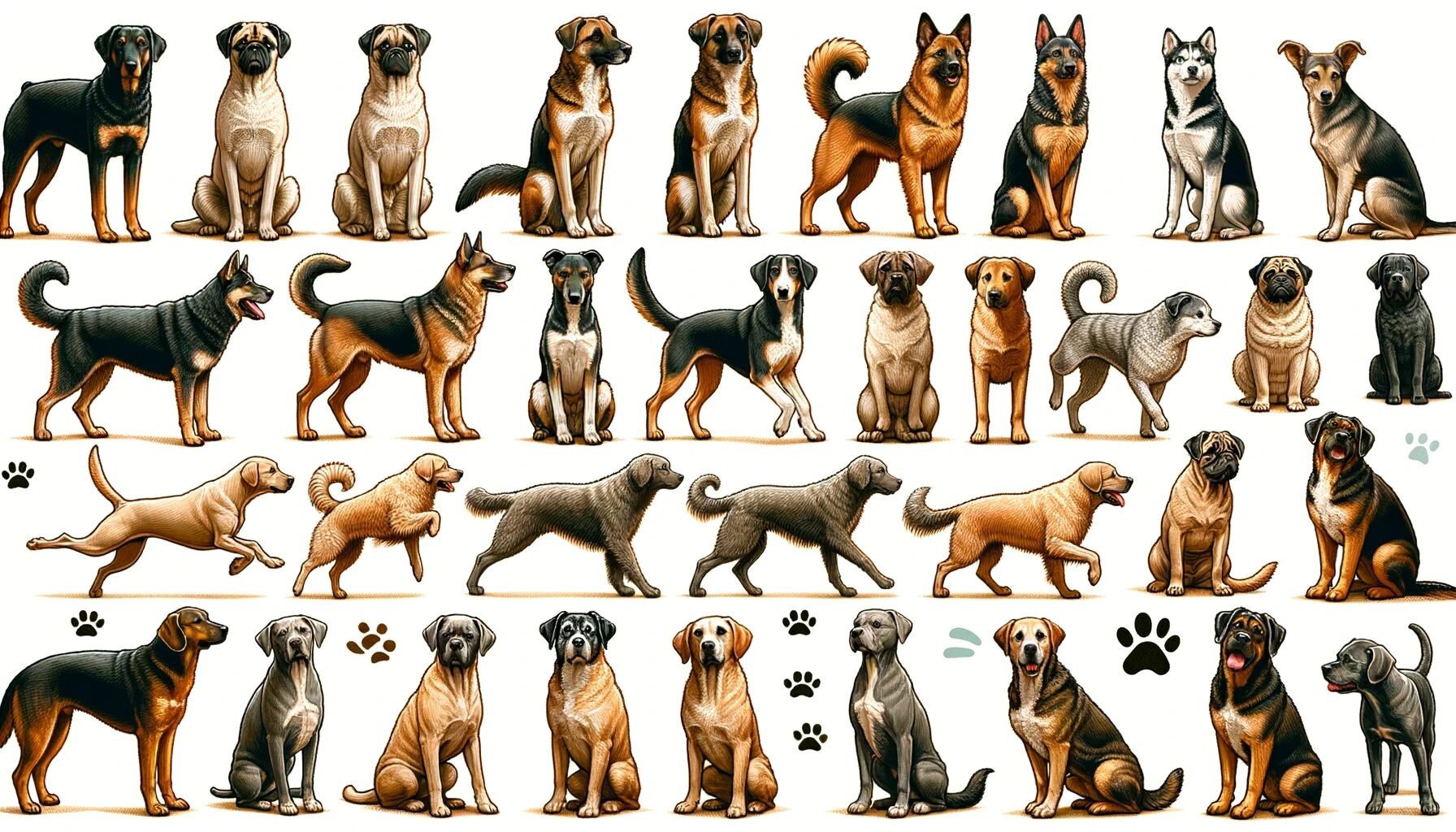Introduction
Dogs, our loyal and loving companions, communicate in a language that goes beyond barks and whines. Their body language offers a window into their emotions, thoughts, and intentions. Understanding these non-verbal cues is not just fascinating but also crucial in building a stronger, more empathetic relationship with your canine friend. In this guide, we'll delve into the nuances of dog body language, helping you become a more perceptive and responsive dog owner.
The Basics of Dog Body Language
The tail is like a dog's emotional barometer. A vigorously wagging tail often signals happiness or excitement, but its position and movement can convey a broader range of emotions. A high, stiff wag might indicate alertness or aggression, while a low, slow wag could suggest insecurity or submission. In contrast, a relaxed, swaying tail generally shows contentment and ease. Ears are equally expressive; forward-pointing ears show interest or alertness, while ears pinned back can indicate fear, submission, or even illness. It's important to consider the context and the whole body when interpreting these signals.
Eye contact in dogs can convey a multitude of meanings. A soft, relaxed gaze often shows trust and affection, especially when accompanied by a slow blinking pattern. However, prolonged staring in the canine world can be a challenge or a threat, particularly in unfamiliar or tense situations. It's crucial for dog owners to understand these nuances of eye contact, as misinterpretation can lead to miscommunication and potential conflicts.
Signs of Comfort and Discomfort
Recognizing the signs of comfort in dogs is key to understanding their well-being. A relaxed dog often exhibits a 'soft' body – loose limbs, a gently wagging tail, and relaxed facial expressions. Their mouth may be slightly open, resembling a smile, and their movements are smooth and fluid. Play bows, where the dog lowers its front end while keeping its rear end up, are invitations to play and signs of a happy, comfortable dog.
Conversely, recognizing signs of discomfort or stress is equally important. A dog under stress may show 'whale eye' (white of the eye showing), a tucked tail, flattened ears, and a tense body. They might exhibit displacement behaviors like scratching, licking, or yawning when not itchy, dirty, or tired. Shivering, cowering, and avoiding eye contact are other clear signs of discomfort. Understanding these signals can help prevent negative experiences and reassure the dog in stressful situations.
Common Misinterpretations
Misinterpreting dog behaviors based on human perspectives is common but can lead to confusion and miscommunication. For instance, a wagging tail is often perceived as a sign of friendliness, but it's crucial to observe the whole body. A stiff body with a wagging tail might indicate tension or uncertainty rather than friendliness. Another example is the interpretation of a dog rolling over. While it can be an invitation for a belly rub, it can also be a sign of submission or anxiety, especially if accompanied by avoiding eye contact or a tense body posture.
The way dogs play can also be misunderstood. Play growling and play fighting are normal behaviors and not necessarily signs of aggression. However, it's important to watch for signs of escalation, such as stiff body language, prolonged eye contact, or raised hackles. These might indicate that play is turning into something more serious. By understanding these subtleties, dog owners can ensure safe and positive interactions for their pets.
Improving Communication with Your Dog
Effective communication with your dog involves observing and correctly interpreting their body language. Encourage behaviors that indicate happiness and relaxation. Praise and positive reinforcement when they show relaxed and happy body language can strengthen your bond. Conversely, when you spot signs of anxiety or fear, try to identify and address the cause. Providing a safe space, using calming techniques, or avoiding stressful situations can help alleviate their discomfort.
Remember, your body language, tone of voice, and overall demeanor greatly affect your dog. Dogs are adept at reading human body language and can pick up on subtle cues of anxiety, anger, or happiness. By maintaining a calm and consistent demeanor, you can create a reassuring environment for your dog. Over time, as you become more attuned to each other's non-verbal cues, your communication and bond will deepen, enhancing the quality of your relationship.
Conclusion
The journey to understanding your dog's body language is ongoing and deeply rewarding. It not only enhances your bond but also ensures a happier, more secure life for your pet. As you become more attuned to your dog's non-verbal communication, you'll discover a deeper level of mutual understanding and respect, further enriching the special bond you share. This understanding fosters a harmonious living environment, where both you and your dog can thrive in a relationship built on empathy and comprehension.

 Dog Behavior and Body Language
Dog Behavior and Body Language